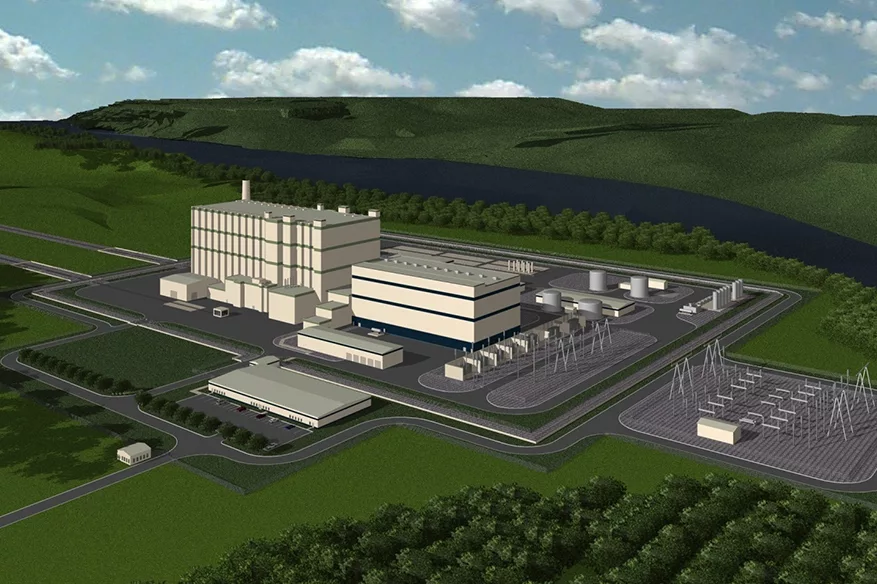
Home » Federal awards put Tri-Cities on map for next generation nuclear power
Federal awards put Tri-Cities on map for next generation nuclear power

December 15, 2020
Tri-City economic development officials are over the moon after the U.S. Department of Energy announced it would invest millions into the advanced nuclear reactor ambitions of two Energy Northwest partners.
Bellevue-based TerraPower, founded and helmed by Bill Gates to develop safe, carbon-free power, and X-energy, based in Rockville, Maryland, each received $80 million in initial funding to build advanced nuclear reactors within 5-7 years.
Both teams will site their reactors at Energy Northwest’s nuclear campus north of Richland.
They are the first-ever awards under DOE’s Advanced Reactor Demonstration Program, established in May and referred to in energy circles by the initials ARDP. The program pushes nuclear energy as an option to meeting rising demand for electricity with carbon-free power.
The $160 million awarded in October launches a seven-year, $3.2 billion plan that will see DOE invest in safer, low-cost advanced nuclear technology, subject to federal appropriations and industry matches.
While nuclear power draws sharp criticism from anti-nuclear organizations such as the Union of Concerned Scientists, Nuclear Information and Resource Service and others, the awards were warmly received in the Mid-Columbia, which prides itself on its pioneering role in nuclear development as a Manhattan Project community.
U.S. Rep. Dan Newhouse, R-Sunnyside, called the ARDP awards “an absolute game-changer” that cements the Tri-Cities as “a global leader in nuclear energy innovation.”
While TerraPower and X-energy are taking different approaches to the next generation of nuclear power, they share similar futures through their mutual partner in Richland.
Energy Northwest will operate both their systems next to the existing 1,200MW Columbia Generating Station (CGS) nuclear plant.
CGS occupies Site 2, one of three nuclear sites beside the river. The others are Sites 1 and 4. The original lineup included Sites 3 and 5, both in western Washington and no longer in the Energy Northwest system.
TerraPower, teaming with GE/Hitachi, designed its 345MW sodium-cooled “Natrium” reactor for Site 4.
X-energy designed its scalable, gas-cooled 80MW Xe-100 reactor for Site 1. The ARDP award contemplates a four-unit, 360MW model.
Both approaches feature flexible a power outlook that is compatible with intermittent power sources such as wind and solar.
“This is incredibly exciting for the state of Washington,” said Greg Cullen, Energy Northwest’s general manager for energy services and development. “The future of advanced nuclear energy runs through the Tri-Cities.”
Energy Northwest and local economic development partners quietly hosted X-energy executives in early November. Their mission: Show the company that the Tri-Cities is nuclear-ready and nuclear-friendly.
David Reeploeg, vice president for government affairs for the Tri-City Development Council (TRIDEC), was part of the team. The visit went well, he said. That is good news for the community’s ambition to be a center for energy development.
“At the most basic level, if these are built in the Tri-Cities, it translates to construction jobs and then operational jobs. We feel like the Tri-Cities is well-suited to be part of the story,” he said, adding, “We have a work force that knows how to do nuclear.” Cullen agreed.
Tri-Citians are comfortable with nuclear power and want it. The community boasts a knowledgeable nuclear workforce, including union partners who understand large-scale projects.
“This community has a lot to offer,” he said.
Cullen said it is logical to target the two unused sites north of Richland for both projects.
The Columbia Generating Station reactor was sited beside the Columbia in the mid-1970s because it needed abundant access to water for cooling.
It was supposed to be the first in a series of nuclear plants developed by what was then called the Washington Public Power Supply System. For a variety of reasons, the additional reactors were never built and WPPS famously defaulted on more than $2 billion in revenue bonds in 1982.
The fiasco left the sites undeveloped and ready for new projects.
The next generation of nuclear power does not require as much water as Columbia Generating System. TerraPower and X-energy technology both use “dry cooling” technology similar to the Fast Flux Test Facility. It requires less than 10% of the water of traditional reactors. Still, the technology does require water.
More promising, both sites were previously certified by the Nuclear Regulatory Commission and Washington’s Energy Facilities Siting Council. The certifications have lapsed, but regulators have pledged to recycle the research for the next round, a move that could shorten permitting processes, Cullen said.
While Energy Northwest is best known for its nuclear plant, the power consortium has a diverse portfolio of power projects, all carbon-free in nature.
TerraPower and X-energy dovetail with the energy ambitions spelled out in MyTri2030, an economic visioning effort led by the Tri-City Regional Chamber of Commerce.
MyTri2030 identifies energy as a priority for future efforts, noting the region is blessed with a mix of sunshine, water to power dams and critically, scientific knowhow.
Washington State Rep. Matt Boehnke, R-Kennewick, was thrilled by the announcement, which complements the state’s clean energy ambitions to combat climate change.
A member of the House Environment & Energy Committee, he called it a payoff for the strong collaboration among federal and state partners, and recognition of the state’s commitment to clean energy, including nuclear.
Promoting nuclear energy as part of the state’s carbon-free energy future is a critical next step that is gaining traction in Olympia, he said.
DOE is expected to announce smaller ARDP awards to “less mature” concepts by the end of the year.
The commitment to advanced nuclear technology should not change when President-elect Joe Biden takes office in January.
Biden voiced support for developing new nuclear technologies to fight climate change in his response to a 2019 Politico survey of candidates for the Democratic nomination for president. He specifically highlighted small modular reactors being developed with support from the DOE network of national laboratories.
Go to bit.ly/EnergyARDP for more information about ARDP and the technology behind the TerraPower and X-energy systems.
Energy
KEYWORDS december 2020





